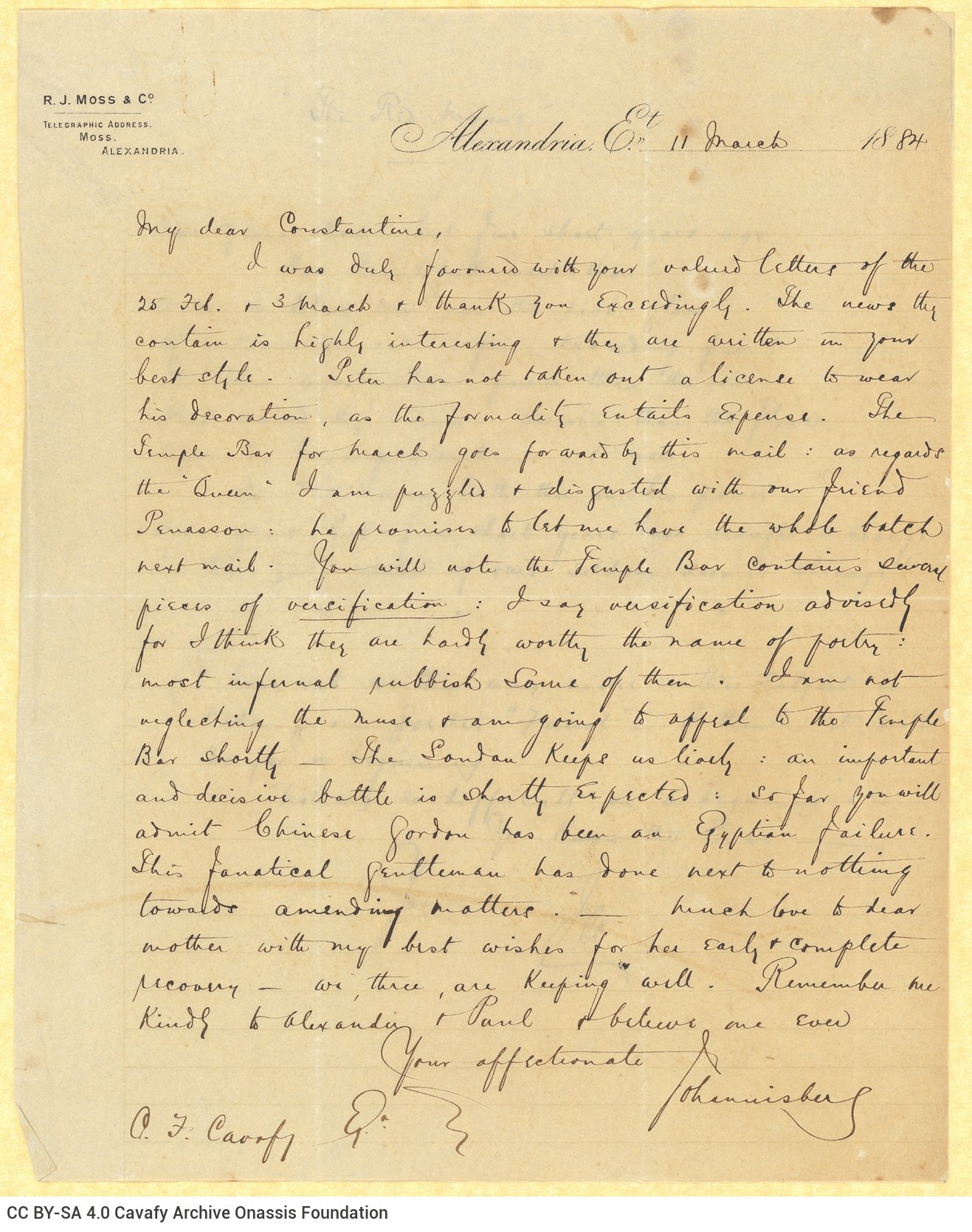υπογράμμιση
υπογράμμιση
πράσινη γραμματοσειρά
κίτρινη γραμματοσειρά
κόκκινη γραμματοσειρά
DIGITAL OBJECT DESCRIPTION
IDENTITY AREA
44 x 27.5 cm
CONTEXT AREA
CONTENT AND STRUCTURE AREA
Handwritten letter by John Cavafy to C. P. Cavafy, on the first and third pages of a double sheet letterhead of R. J. Moss & Co., Alexandria. The remaining pages are blank. Discussion on poetry. Comments on the Sudan and reference to the medal awarded to their brother Peter-John (Order of the Medjidie). Excerpt from John’s poem “The red Mouse” in the third page. (Alexandria)
CONDITIONS OF ACCESS AND USE AREA
English
Writing in ink. Watermark: R. J. Moss & Co., Alexandria. Physical item wear: oxidations.
NOTES AREA
The transcription and editing of the letters of John Constantine Cavafy addressed to C. P. Cavafy was first carried out by Katerina Ghika; said transcriptions were subsequently uploaded to the official website of the Cavafy Archive.
The letter includes an excerpt from John’s poem “The red Mouse”, which, according to him, was based on Goethe’s Faust. John expresses his dislike for poems published in the Temple Bar.
ACCESS POINTS
Cavafy, John Constantine. “Letter by John Cavafy to C. P. Cavafy”. Letter, 11.03.1884. GR-OF CA CA-SF02-S01-SS02-F20-SF001-0040 (415), Onassis Foundation C. P. Cavafy Fonds. From The Digital Collection of the Cavafy Archive, edited by Onassis Foundation, Athens, last modified 01.10.2025. https://doi.org/10.26256/CA-SF02-S01-SS02-F20-SF001-0040.



